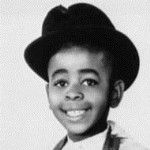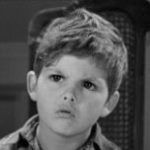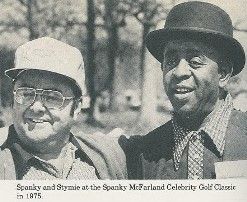A look at a ground-breaking short film series of the 1920’s-1940’s, after the jump …..
I have (half-jokingly) stated that my first exposure to both opera and musical theater came from an old children’s film (and later TV) series. But several years ago I came upon a book upon that series … which was quite an education on the series.
The story of Our Gang/The Little Rascals is a fascinating one, and while younger readers may be unfamiliar with it: this may bring a smile to readers of-a-certain-age. It was a series that was groundbreaking at the time: first, showing kids behaving like kids – even when they were emulating adults (unlike the prevailing style of the era). Second, it was an integrated cast, with black and white children – as well as both male and female children – in starring roles. And finally, it reflected its times – with the bulk of the talking films reflecting the Depression, with many poor kids compared to the few rich ones.
At the very least, the book by Leonard Maltin & Richard Bann clarified some mysteries I had about the series; it may well do the same for you.
The genesis of the series began in 1921 with its 29 year-old producer Hal Roach auditioning a child actor to appear in a film. He had grown tired with over-rehearsed kids acting like adults, and afterwards looked out the window to see a group of kids acting like …. well, kids.
And so Hal Roach oversaw all phases of operations: the scriptwriters (who included future director Frank Capra and “Woody Woodpecker” creator Walter Lantz) and directors (for the first twelve years, notably Robert F. McGowan, who was noted for his ability to get the best out of the very young performers). The kids would transition out of roles when they reached certain ages, replaced by younger ones. At first, they were cast locally, later sought via national auditions. Interestingly, three who auditioned but were rejected for not fitting the profile of a rascal were Mickey Rooney, Judy Garland and Shirley Temple.
Originally titled Hal Roach’s Rascals (and more on the various names as we go), the 221 episodes of the series can be divided as described below. Growing up in the New York suburbs in the 1960’s-70’s, my exposure to what was shown is also indicated.
* Silent era (from 1922 to early 1929). The first seven years these two-reel films (approx 20 minutes) were distributed by Pathé Studios, and the last two years by the newly-formed MGM Studios. Only 2-3 of the later silents do I recall seeing on TV when I was a child.
* The Hal Roach Studio “talkies” (from 1929 to 1938). These are the ones that most people will probably recall, shown under the name “Little Rascals” on TV.
* The MGM Studios Our Gang series (from 1938 to the series end in 1944). I do not recall seeing any of these; my youngest sister Jeannemarie has some recollection.
Here is the etymology of the name(s) of the series. The title of the very first “Hal Roach’s Rascals” short released to theaters was “Our Gang” (which is considered a ‘lost film’ today; no copy is known to exist). Much like the 1950’s TV show “You’ll Never Get Rich” was re-named “The Phil Silvers Show” but is commonly known as “Sgt. Bilko” – the name “Our Gang” was the name that stuck: as the early print reviews used it and both theater owners (happy with the public reaction) and the press asked, “Hal, do you have any more “Our Gang” shorts coming?” And thus became the name for the series through its end in 1944.
I don’t need to tell many of you about the stars of this series: George ‘Spanky’ McFarland (1928-1993), Carl ‘Alfalfa’ Switzer (1927-1959), Billie ‘Buckwheat’ Thomas (1931-1980), Tommy ‘Butch’ Bond (1926-2005), Darla Hood (1931-1979), and my favorite, Matthew ‘Stymie’ Beard (1925-1981) …. who received his bowler hat as a gift from Stan Laurel, one of Stymie’s idols.


As mentioned, several old songs of the era first came into my consciousness: such as 1919’s How ‘Ya Gonna Keep ‘Em Down on the Farm? and I’m sure that many of my peers first heard opera (so-to-speak) via Alfalfa’s Barber of Seville rendition.
The series was quite contemporary for its time; with the Our Gang Follies of 1938 taking its name from MGM’s current “The Broadway Melody of 1938”. To watch the series gave one a sense of what popular music was like following the advent of sound, such as Good Old Days – the series theme song.
The adults in the show – while not reduced to off-screen, mute-trumpet roles such as in “Peanuts” – were nonetheless background players. But one of them – Miss Crabtree who was portrayed ….


By the mid-1930’s, theater owners were switching from two-reel (20 min) shorts to double-features, and were paying less for them, as well. At that time, Hal Roach switched to one-reel (10 minute) comedies, before deciding in the spring of 1938 that he was no longer making much money. And so MGM bought-him-out, purchasing the rights to the name “Our Gang” as well. The very last Hal Roach-produced short, June 1938’s Hide and Shriek – where the boys are trapped in an amusement park house-of-horrors – ends with them (prophetically) placing a sign on their door “Out of Bizzness.”
The subsequent MGM shorts are almost universally considered sub-standard (by theater-goers of the day as well as critics) with only some of its episodes receiving high marks. As a result, MGM kept-on such characters as Alfalfa, Spanky and Buckwheat to older ages than would have been the practice in the past. Only two new names stood out in this period: Billy “Froggy” Laughlin (with a trademark froggy voice) who was the youngest cast member to die: at age 16 in 1948, hit by a bus while he was delivering newspapers on a scooter.
The other was named Mickey Gubitosi, and for those of you who were puzzled to learn – either while he starred in the TV show Baretta in the 70’s, or during his murder trial last decade – that Robert Blake was in the Little Rascals …… it’s probably due to his appearing in the MGM shorts only, (not seen by all).
During the advent of TV, Hal Roach bought back the rights to his shorts and – since he could no longer use the title “Our Gang” – decided to go back to (a modified version) of Plan A: naming the show The Little Rascals when it went into syndication in the mid-1950’s. It took hold nationwide when a new distributor named King World took it nationwide in the 1960’s.
The show did have its critics, to be sure. It did feature some ethnic humor/racial stereotypes of the day that audiences (only a scant few years later) would wince at, and the (few) black adults were shown in stereotypical roles. Accordingly, some episodes were later cut, and some didn’t make it into syndication for those reasons.
Yet several of its African-American stars such as Thomas and Earnie Morrison (from the silent era) defended the show, saying that director Robert McGowan treated them no differently and that the series showed genuine friendship across-all-boundaries. And the African-American historian Donald Bogle wrote, “By the 1920s, black actors, especially children who joined the Our Gang cast and youngster Earnest Morrison (“Sunshine Sammy”), started receiving more roles as Hollywood became a boomtown and more studios opened”.
Most of the child actors either left acting after puberty or had limited success afterwards; with many simply taking factory or office jobs.
One meme long held that there was a “curse” with many child actors getting in legal trouble, substance abuse and dying early – with Alfalfa as Exhibit A – going from his role opening the gym floor in It’s a Wonderful Life to dying by a gunshot wound at only age 31. However, Snopes examined the records and concluded that was not true: that the majority of the kids lived fairly normal lifespans.
One person who lived an abnormal lifespan was Hal Roach himself ….


With the passing of Shirley Jean Rickert in 2009 and Jackie Cooper (see below) in 2011, there are only a few surviving cast members of any note from the Hal Roach era.
Two of the child actors are noteworthy due to their later success in show business (uncommon for child actors of any era).
Jackie Cooper worked alongside Wallace Beery in many post-Rascals films and from 1964-69 was VP of program development at Columbia Pictures Screen Gems TV division, responsible for packaging series (such as Bewitched) and other projects and selling them to the networks.


Another is Dick Moore ….


During “Our Gang”, he was best friends with Stymie (who convinced his mother to name their youngest child Richard after his friend) and they had a memorable reunion on Tom Snyder’s “Tomorrow” show, just a short time before Beard’s death in 1981. Dick Moore is still alive at age 88.
Though these films have not been regularly seen on TV in some time and with scattered availability on home video, their legacy is immense. The 1960’s pop band Spanky & Our Gang draws on it, and who can forget Eddie Murphy as Buckwheat? Hopefully, these films will be still available in 2022, the series’ 100th birthday.


I’ll close this edition with two videos. While my favorite overall episode of the series was the 1934 episode “Mike Fright” – featuring the International Silver String Submarine Band – my favorite scene of the entire series came from 1933’s Mush and Milk – with the Scottish-born actor Jimmy Finlayson calling the boarding school headmaster to tell him that his back pension has come in. Finlayson (it turns out) was the inspiration for Homer Simpson’s exclamation “D’oh!”. And below you can see why … after Spanky gets through with him.
To me, the song that I most associate with the series is Alfalfa singing I’m in the Mood for Love – a 1935 tune written by Jimmy McHugh/Dorothy Fields that has been covered the past 75+ years by a lengthy list of performers. An instrumental version by the tenor saxophonist James Moody was later made into a ‘vocalese’ tune Moody’s Mood for Love by Eddie Jefferson.
And below you can hear Alfalfa …. uhhh … err … well, sing it.
I’m in the mood for love
Simply because you’re near me
Funny, but when you’re near me:
I’m in the mood for loveWhy stop to think of whether
This little dream might fade?
We’ve put our hearts together
Now we are one, I’m not afraidIf there’s a cloud above
If it should rain, we’ll let it
But for tonight: forget it!
I’m in the mood for love
1 comment